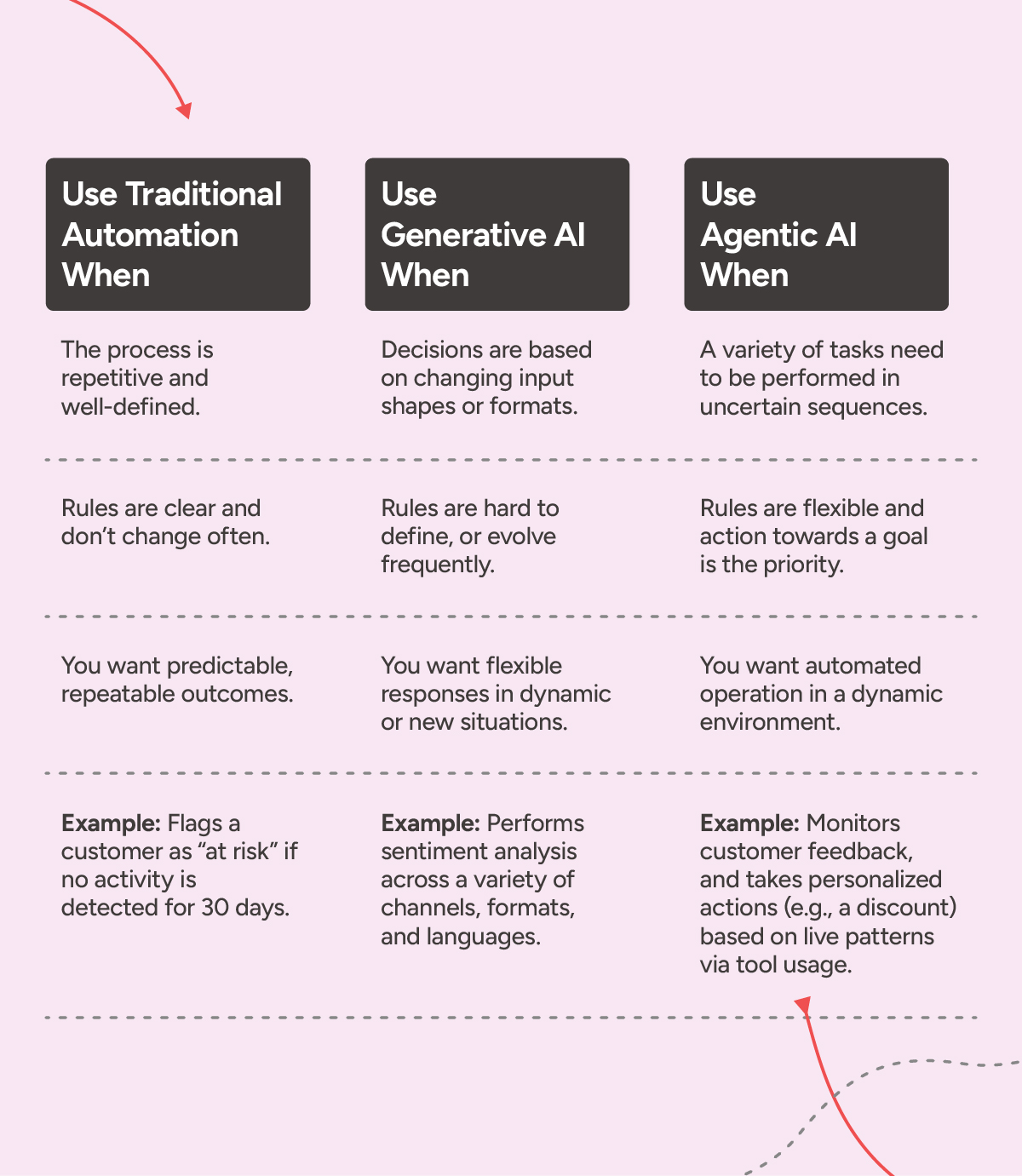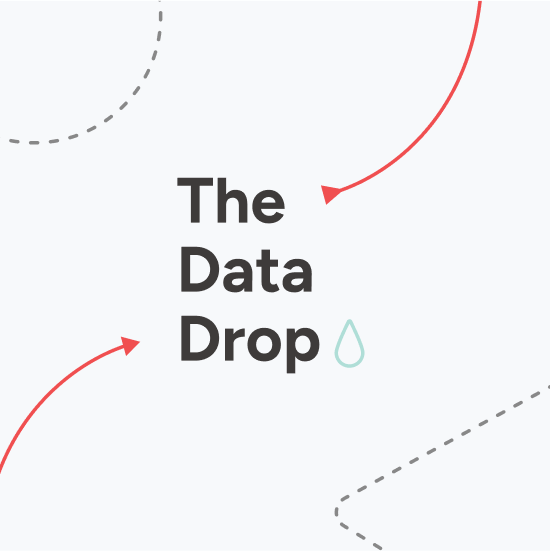It’s confusing. How do you know when to use traditional automation, when does GenAI make sense, and where do agents fit in?
- Trad automation follows fixed rules to complete tasks the same way every time. It’s best for processes where steps and outcomes don’t change
- GenAI generates new content like text, images, or summarizes based on patterns learned from data. It’s best used when the output needs to adapt to varied formats, languages, or tone.
- Agents are AI systems that can plan actions to achieve a goal, choose the next best step on their own, and adjust strategies as new data or conditions change.
Here’s a pocket overview of the different approaches, when it’s best to use what, and with examples for each one.

What makes a task a good fit for agentic AI?
A group of us here at KNIME recently met up for dinner with community hero, Hans Samson, while he was in town to record a webinar. We got into the topic of agentic AI and the question: When is it useful?
Here are 4 questions you can ask yourself to help decide.
- Is it a multiple step process? Agents are great for tasks that have multiple stages or checkpoints, like planning a trip or onboarding a new customer.
- The goal is clear, but the path is flexible? Agents are perfect when you know the end goal but aren’t sure of the exact steps to get there. Here the agent figures out the route to find you the best deal, summarize your reports, and organize your files.
- Does the task require collecting info from multiple sources? An agent can pull bits and pieces of information from many different places and assemble them into one useful answer (much faster than us 😉).
- Is there a need for adaptability? Agents are useful for situations where things might change mid-task. The agent can adjust on the fly without getting stuck to e.g. plan deliveries where routes change if traffic jams appear or trouble-shooting a tech issue where the fix depends on the errors.
Put simply: Good agent tasks are like errands you’d delegate to an assistant. Things that are clear, structured, and tedious, but where the assistant will need to make their own decisions along the way.
And here are a few tasks that are not great for agents
- Creative, judgment-heavy work like writing a novel, designing a new brand style, or making big strategic decisions. Agents can help but shouldn’t replace you.
- One-step, simple tasks like “add 2+2” or “look up today’s weather” — you don’t need an agent for that.
- Tasks needing human empathy like counseling or delicate negotiations.
Pop! Goes the mood
I’ve always loved music, but as a child of the ’80s my grip on post-Y2K pop has definitely slipped. That’s why Hans Samson’s article “Love, Fear, and Everything in Between: The Popularity of Pop Songs Since 1999” caught my eye.
Hans dug into around 2,500 lyrics from the Dutch Top2000 chart, sorted them into themes like love & relationships, mental & emotional states, and identity & self-expression, and tracked how their moods have shifted over time.
The takeaway? Pop isn’t what it used to be. Love songs are fading, self-expression is on the rise, and overall, the lyrics have taken a darker, sadder turn. Read more in Hans' article.
